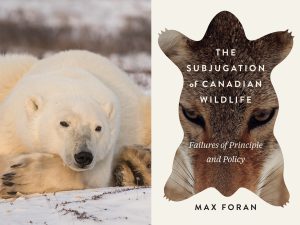Canada is showing leadership on polar bear conservation, but must work quickly to identify critical polar bear habitat and develop its capacity to respond to ecological disasters in the Arctic Ocean, according to a new report by the World Wildlife Fund.
The WWF’s first Polar Bear Scorecard, released late last month, assessed the progress that states with polar bear populations have made toward meeting their commitments under the Circumpolar Action Plan for the Conservation of Polar Bears (CAP) and found that, two years into the 10-year plan, the polar bear range states — Canada, the United States, Denmark (Greenland), Norway and the Russian Federation — have collectively completed just five per cent of their action items. The five nations voluntarily committed to CAP in 2015 after the International Union for the Conservation of Nature (IUCN) reassessed polar bears as “vulnerable” and warned that the loss of Arctic sea ice could threaten the species’ long-term survival.
The Action Plan calls on the polar bear range states to conduct subpopulation assessments, protect key habitat, integrate Indigenous and traditional knowledge into polar bear management plans, and sustainably manage polar bear harvest and trade. The Canadian Arctic is home to two-thirds of the global polar bear population — an estimated 22,000 to 30,000 bears — which places a “major burden” on Canada to set a positive example for the other range states in terms of research and monitoring, says Brandon LaForest, a senior specialist of Arctic species and ecosystems with WWF Canada.
Canada has risen to the challenge, initiating or completing six polar bear subpopulation assessments in the past two years, but more frequent monitoring is needed, along with identification of critical habitat.
“While we give the government full marks for accomplishing those assessments, we don’t think that’s enough in terms of actively managing polar bears in a dynamic environment that is changing,” LaForest says. “Some population assessments are 10, 20 years old, and we can’t use that to actively manage a species that, it is well-documented, is feeling the effects of climate change.”
Canada also urgently needs to develop strategies to deal with increased traffic through a warming Arctic. As shipping and tourism ramp up in the Far North, communities have grown worried about the potential impacts on the Arctic environment.
“We’ve had workshops in Iqaluit, and one of the things we hear over and over again is that communities are afraid of the eventuality of an oil spill. They do not have the tools or the capacity to deal with that, and the coast guard does not have a strong enough presence anywhere in the Arctic to deal with that level of a disaster,” LaForest says.
LaForest notes that polar bear populations are currently stable, but says that ultimately, range states must show greater cooperation on conservation — many bear populations span international borders — and a willingness to talk openly about the biggest threat the bears face: climate change.
“We’d like to see a circumpolar assessment of the critical habitat of polar bears and that includes the last ice area, which is the area in the Canadian archipelago that’s forecast to be the last refuge of summer sea ice as the climate continues to warm,” he says. “We want to see that brought up to the international level and have the range states present a united front.”





